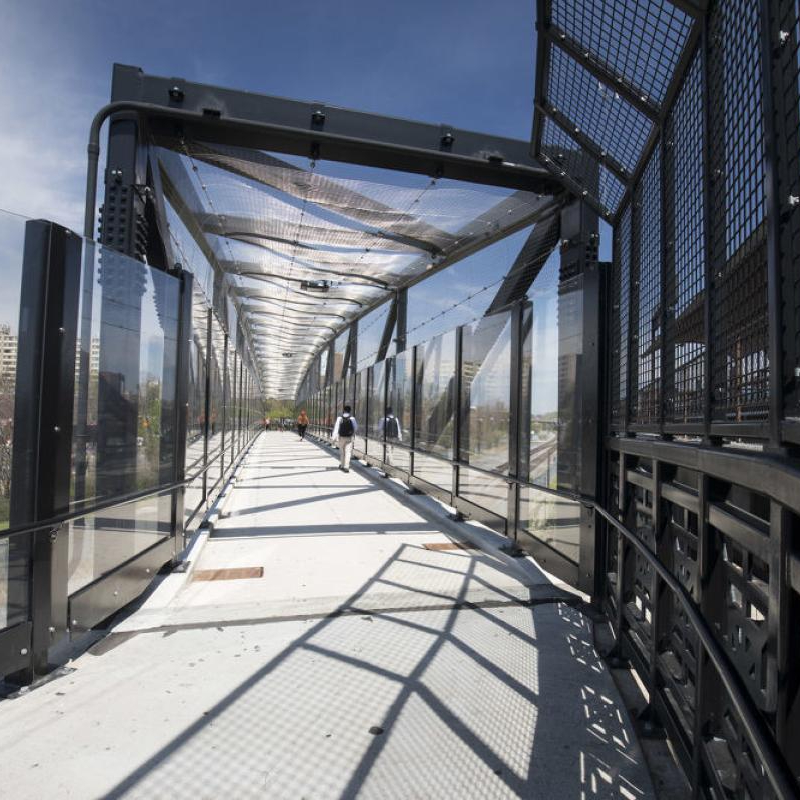Understanding the Cost of Temporary Construction Fencing
Temporary construction fencing is an essential element in the construction industry, providing necessary safety, security, and privacy on job sites. As construction projects progress, the need to establish boundaries becomes paramount to ensure the safety of workers, protect the site from unauthorized access, and prevent theft or vandalism. However, understanding the costs associated with temporary fencing is crucial for project budgeting and management. In this article, we’ll explore the factors that influence the cost of temporary construction fencing and provide insights into budgeting for such expenses.
What is Temporary Construction Fencing?
Temporary construction fencing refers to the barriers installed around a construction site to secure the area and control access. These fences can range from simple chain-link systems to more elaborate and visually appealing options designed for urban environments or high-traffic areas. Their installation duration can vary from a few days to several years, depending on the project's scope.
Factors Affecting the Cost
Several factors influence the cost of temporary construction fencing, including
1. Material Type The choice of material is one of the most significant determinants of cost. Chain-link fencing is often the most economical option and typically ranges from $7 to $15 per linear foot, depending on factors like height and gauge. In contrast, more durable options such as welded wire or decorative fencing can significantly increase costs, sometimes exceeding $30 per linear foot.
2. Height and Length of Fencing The overall size of the fenced area directly impacts the cost. Fencing that needs to enclose a larger area will naturally require more materials and labor. Additionally, the height of the fence plays a critical role; taller fences designed to enhance security may be more expensive to manufacture and install.
3. Installation and Labor Costs Temporary construction fencing installation is generally straightforward, but labor costs can vary significantly depending on the location and the specific requirements of the project. In urban areas or locations with operational complexities, labor costs may increase due to permit requirements and coordination efforts.
4. Additional Features Many projects opt for additional features, such as gates, signage, and privacy screening. These upgrades provide enhanced security and visual appeal but can also lead to additional expenses. Gates, for instance, can add anywhere from $100 to $500 to the overall cost, depending on their size and type.
5. Rental vs. Purchase Another key consideration is whether to rent or purchase temporary fencing. Renting is often more cost-effective for short-term projects, with typical rental prices around $1 to $2 per linear foot per month. However, for long-term construction sites, purchasing might be more economical in the long run, despite the initial expense.
cost of temporary construction fencing

6. Location Geographic location can heavily influence fencing costs due to variations in market demand, shipping costs, and local labor rates. Prices may be higher in urban areas where construction materials and services are in higher demand.
Budgeting for Temporary Construction Fencing
When budgeting for temporary construction fencing, it is essential to conduct a thorough assessment of the project’s specific needs. Here are some steps to help develop an effective budget
1. Estimate the Length and Height Needed Calculate the perimeter of the construction site and determine the required height for the fence based on security needs.
2. Research Material Options Consider different fencing materials and their associated costs, and weigh the benefits of durability against the budget constraints.
3. Contact Multiple Vendors Obtain quotes from various suppliers and contractors to get a competitive understanding of prices in your area.
4. Consider Additional Costs Factor in any additional expenses, such as transportation, installation, permits, gates, and signage.
5. Review Rental Options For projects with a flexible timeline, consider whether renting fencing may be more cost-effective.
6. Plan for Contingencies Construction projects can be unpredictable; hence, allocate a portion of the budget for unexpected costs associated with fencing.
Conclusion
In conclusion, understanding the costs associated with temporary construction fencing is essential for effective construction project management. By considering the various factors that influence pricing and taking the time to budget accurately, construction managers can ensure that their projects remain within financial constraints while maintaining the necessary safety and security measures on-site. Investing in the right fencing solution is not only a wise financial decision but also a crucial step in safeguarding the integrity of the construction project.
-
Versatility of Expanded Aluminum Metal for Various Applications
NewsMay.19,2025
-
The Geometry of Steel Gratings: Why It Matters
NewsMay.19,2025
-
Reinforcement Applications of Perforated Mesh in Masonry
NewsMay.19,2025
-
Essential Tools for Installing a Deck Mesh Railing
NewsMay.19,2025
-
Anti-Slip Flooring Made with Stainless Expanded Mesh
NewsMay.19,2025
-
Adjustable Steel Grating for Uneven Terrain
NewsMay.19,2025
Subscribe now!
Stay up to date with the latest on Fry Steeland industry news.

